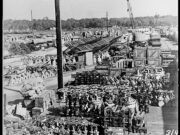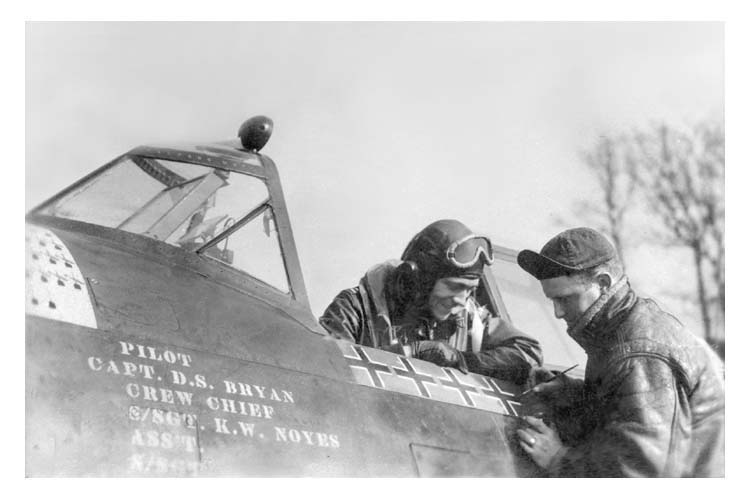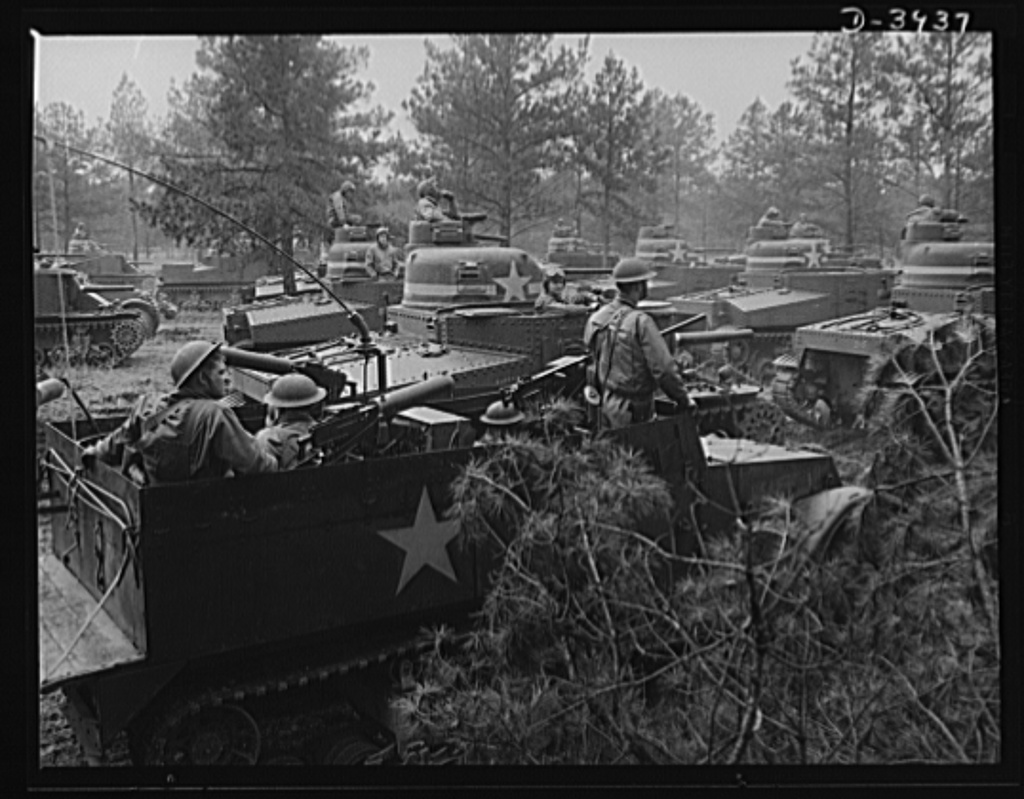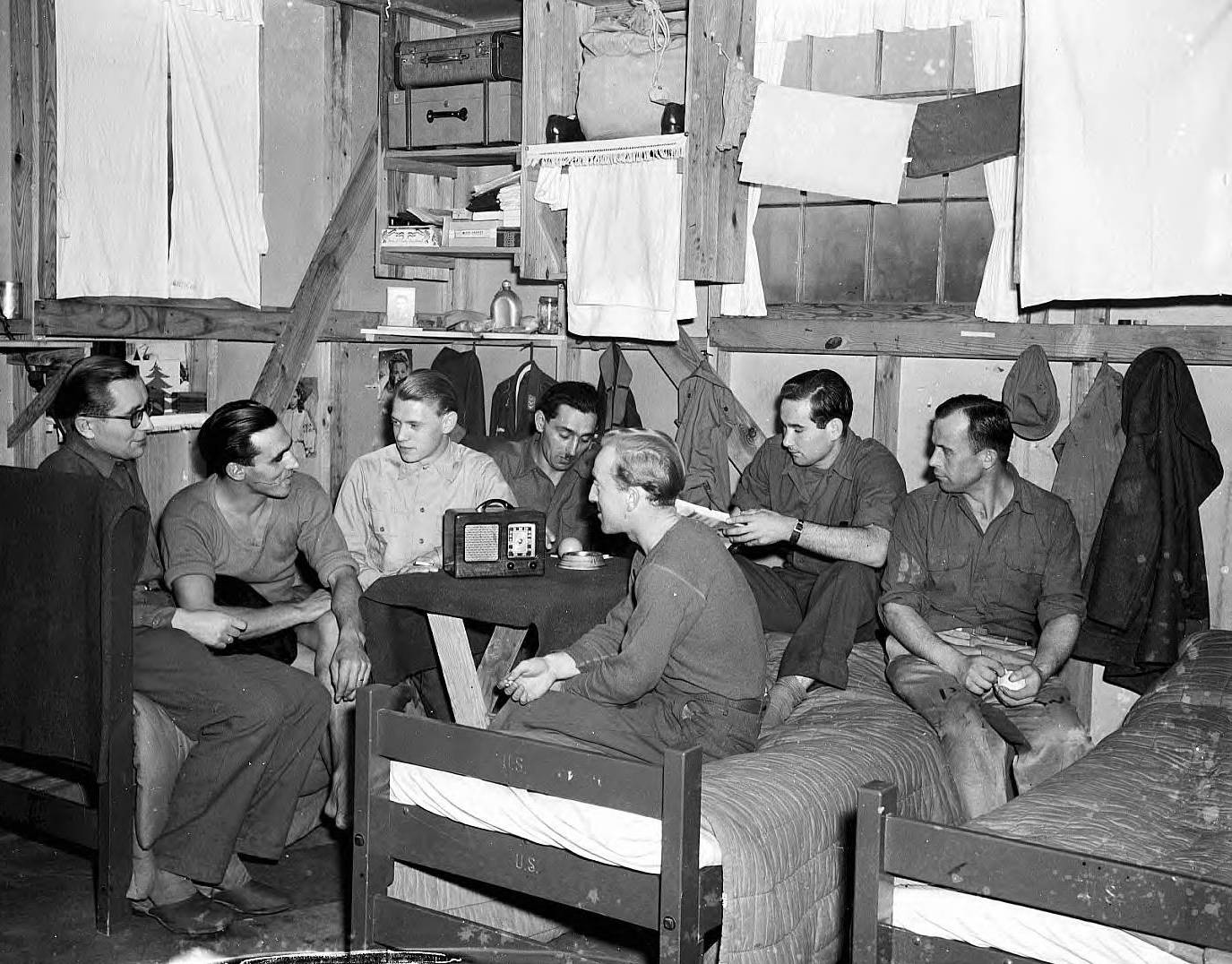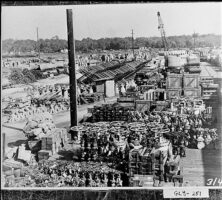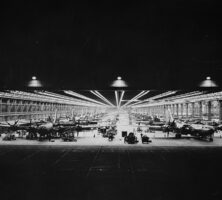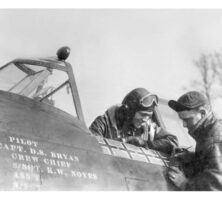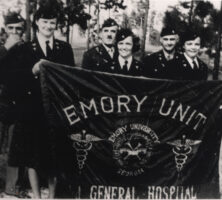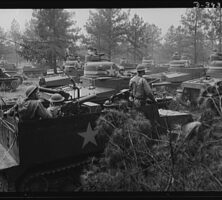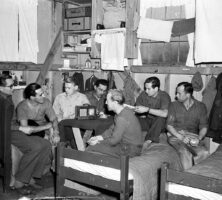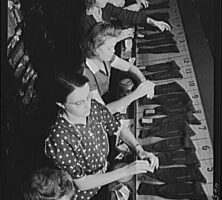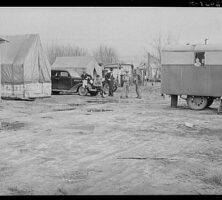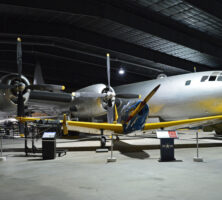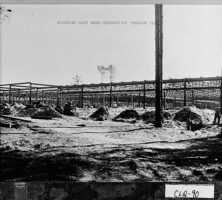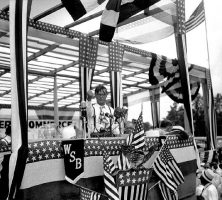Southern states were critical to the war effort during World War II (1941-45) and none more so than Georgia.
Some 320,000 Georgians served in the U.S. Armed Forces during World War II, and countless others found employment in burgeoning wartime industries. Their experiences were pivotal in determining the state’s future development, and the war itself marked a watershed in Georgia’s history. Because it occurred when important shifts in the state’s politics, race relations, and economy were already under way, the war accelerated Georgia’s modernization, lifting it out of the Great Depression and ushering it into the mainstream of American life.
Economy and the War Effort
In 1938 U.S. president Franklin D. Roosevelt called the South “the nation’s number one economic problem” and thereafter devoted generous New Deal spending to improving conditions in the region. Indeed, the South that Roosevelt encountered on his frequent trips to Warm Springs was fundamentally at odds with the rest of the nation, even before the depression.
Whereas other regions experienced high rates of urbanization during the late nineteenth and early twentieth centuries, the South remained predominantly rural. A majority of southerners lived and worked on farms, and agricultural employment in the region exceeded national averages by 73 percent. Incomes lagged well behind national norms, and poverty was a common and enduring feature of southern life, as was the distinctive system of racial segregation that limited the freedoms of the region’s large Black population. As historian Morton Sosna concludes, prior to World War II, the “South was considerably poorer, blacker, and more rural than any other part of the United States.”
Although they failed to improve southern economic conditions significantly, Roosevelt’s New Deal programs nevertheless established a federal commitment to the region’s welfare that continued through World War II. As the nation mobilized for war abroad, federal defense dollars flooded southern states in the form of military installations and defense contractors.
Nowhere was this more the case than in Georgia, where every major city could boast a military installation of some variety. Fort Benning, later renamed Fort Moore, in Columbus, for instance, was the largest infantry training school in the world; Robins Field outside Macon employed some 13,000 civilians at its peak; the U.S. Navy trained 2,000 combat pilots at the University of Georgia in Athens; and Hunter Field and Camp Gordon (later Fort Gordon and in 2023 renamed Fort Eisenhower) welcomed hundreds of thousands of enlisted men to the Savannah and Augusta areas respectively.
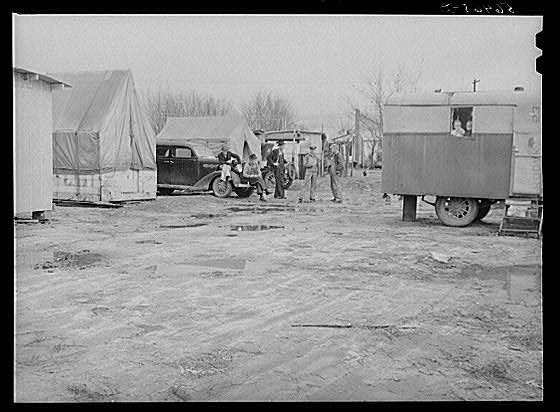
Defense contractors meanwhile relocated throughout Georgia, providing employment, aiding the state’s economic recovery, and allowing civilians to make valuable contributions to the war effort. Marietta’s Bell Aircraft plant (also known as Bell Bomber), for example, at its peak put some 28,000 Georgians to work building B-29 bombers, causing the town’s population to swell from a modest 8,667 residents in 1940 to 20,687 by the end of the decade. Macon and Milledgeville also welcomed the arrival of new ordnance plants.
The growth of the manufacturing sector in Georgia had consequences for the state’s traditional economic engine, agriculture. All American farmers were strained by the war effort. On the one hand, demand and prices were up. Agriculture had been disrupted on the European continent due to the war, and the German blockade of Great Britain had sunk many American supply ships. American grain exports, for example, decreased 30 percent between September 1939 and September 1940, and the average caloric intake in Europe was decreasing. The net income of the average American farmer increased from $700 to more than $2,000 between 1940 and 1945.
On the other hand, the supply of farm labor was decreased by the war effort. Agricultural workers were not permitted draft deferments until August 1942, and many voluntarily left their farms for defense factories in urban centers, where the pay was much better. Moreover, many farmers had to sell their farms and land to defense manufacturers, further accelerating the migration of Georgians into urban centers. Camp Gordon in Augusta and Camp Stewart in Hinesville both housed German and Italian prisoners of war, and in both towns local farmers recruited the POWs during harvest season to offset American labor shortages.
Georgia’s largest civilian contribution to the war effort came from the coastal region, where laborers constructed nearly 200 “Liberty ships” to transport troops and goods to the European and Pacific theaters. With Western Europe under Nazi control and Britain suffering a devastating air campaign, these ships were required to support American allies during the war. A high production rate was necessary both for the sheer size of the war effort and because German U-boats were sinking hundreds of Allied ships attempting to break the German blockade of Britain.
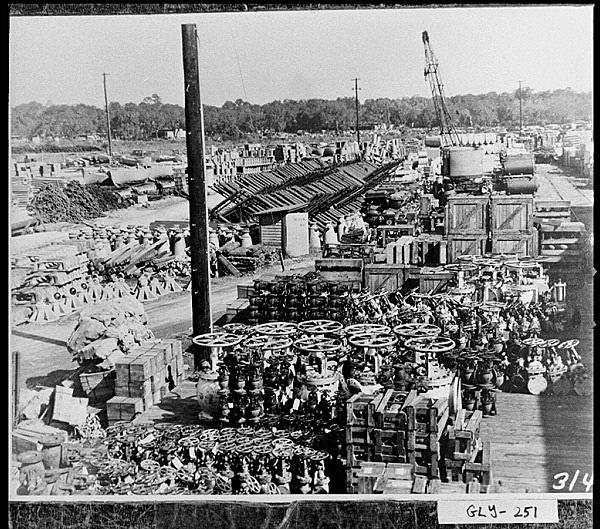
In early 1942 the Southeastern Shipbuilding Corporation secured a contract to construct 36 Liberty ships at a site on the Savannah River, just east of Savannah. Over the next three years, the company employed more than 15,000 people and built a total of 88 ships. Though heroic by any ordinary measure, Savannah’s production was actually outpaced by the neighboring J. A. Jones Shipyard in Brunswick. By constructing multiple vessels simultaneously on six slips in the Brunswick River, workers at the Brunswick shipyard produced a total of 99 Liberty ships in only two years. On average, Brunswick produced one of the approximately 440-foot-long ships every eighty-nine days.
In coastal shipyards and at other installations throughout the state, women especially were among the beneficiaries of the wartime employment bonanza. With enlisted men deployed overseas, large numbers of women entered the workforce for the first time to meet increased wartime production needs. Nationwide, the percentage of women in the workforce jumped from 24 percent at the beginning of the war to 36 percent at the war’s end. Many found employment in traditionally male-dominated fields, working in such environments as munitions factories and industrial plants. Of the more than 28,000 people employed at the Bell Aircraft plant in Marietta, for instance, 37 percent were women.
However, women’s wartime employment occurred in a controlled environment that reinforced gender norms even as it allowed women to assume responsibilities ordinarily reserved for men. Black women were often excluded from higher paying jobs altogether. Following the war’s conclusion, large numbers of women were forced to retire from the workplace and resume their prewar domestic routines, even though a majority claimed that they wanted to keep their new jobs. Those women who remained in the workforce predominated in clerical and sales positions and other “white blouse” occupational categories, in which salaries were often only half as large as those paid to their white-collar male counterparts.
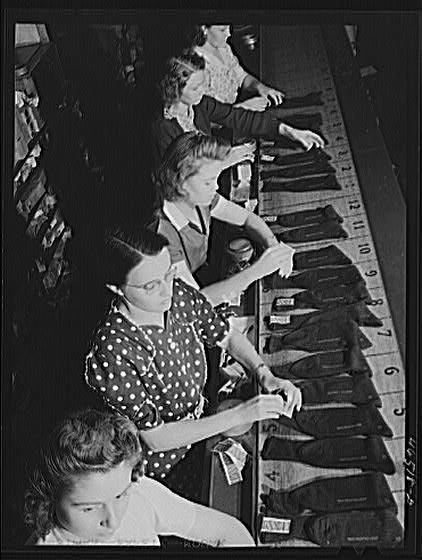
Black workers also benefited from the nation’s wartime labor shortage and increased production needs, earning higher wages and enjoying greater opportunity for employment, albeit in a segregated labor system. Due to the labor shortage, workers of both races organized in unprecedented numbers, and defense industry workplaces were frequently the sites of negotiations that anticipated the civil rights debates of the 1950s and 1960s. Black workers in Georgia and elsewhere generally adopted conservative goals, lobbying for increased wages and skilled employment rather than mounting an attack on segregation outright, and their efforts often met with mixed results.
In Savannah, for instance, Black workers at the Southeastern shipyard encountered stiff opposition from management, local political organizations, and the American Federation of Labor, which defended white privilege in the shipbuilding trades. As a consequence, Black workers in Savannah failed to organize effectively and were denied access to higher paying skilled positions.
In Brunswick, however, Black workers at the J. A. Jones Shipyard successfully aligned themselves with the Industrial Union of Marine and Shipbuilding Workers of America, thereby securing some access to skilled labor positions. Even those Black workers excluded from skilled positions nonetheless benefited from defense industry employment because federal guidelines mandated higher wages than were otherwise available locally. At the Bell Aircraft plant in Marietta, for example, unskilled laborers commanded higher wages than had previously been available to Black professionals in Atlanta.
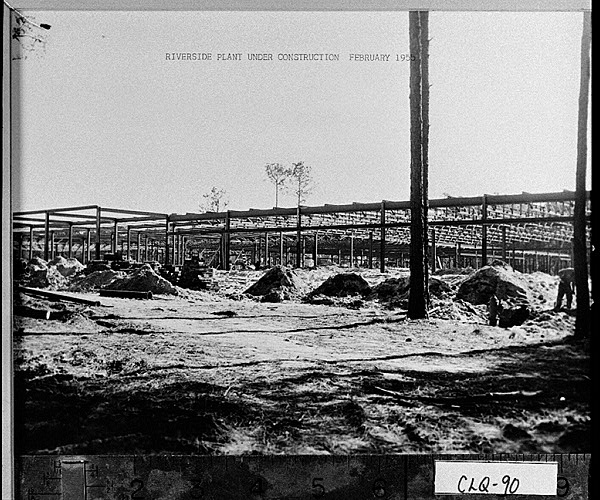
Following the cessation of hostilities in Europe and the Pacific, Georgia’s booming urban centers continued to thrive, effectively translating their wartime recovery into postwar prosperity. Between 1946 and 1955 some 500 new factories began production throughout the state, opening doors of opportunity and dramatically altering Georgia’s economic landscape. At the same time, the mechanization of the state’s agriculture further diminished the need for farm laborers, precipitating an urban migration that depopulated much of Georgia’s countryside. As a consequence, more Georgians were employed in manufacturing than farming by 1950.
The rural exodus that attended the state’s economic development disrupted the stability and cohesion of community life for those Georgians who were forced to find employment in urban locales. However, while many expressed regret at the passing of the old order, most Georgians welcomed the perks of postwar prosperity. Over the course of the next two decades, wages continued to rise, in part because the federal War Labor Board fixed regional wages during World War II, and Georgians enjoyed ever-increasing standards of living. By 1960 the state’s per capita income had reached 73 percent of the national average, whereas in 1940 it stood at a meager 57 percent. Rates of homeownership increased, as did the percentage of citizens who enjoyed indoor plumbing, electricity, and air conditioning.
Politics and Civil Rights
Prior to World War II, Georgia’s politics were profoundly undemocratic and incompatible with social progress. The white primary, which barred Black participation in Democratic primaries, effectively disfranchised African Americans until its abolition in 1946. At the same time, the county unit system enabled sparsely populated rural counties to exercise undue influence in statewide primaries by limiting the electoral significance of Georgia’s expanding metropolitan areas. When combined with an antiprogressive tenor in Georgia’s politics more generally, the white primary and the county unit system allowed county seat oligarchs to dominate state politics until the middle of the twentieth century.
Perhaps more than any other figure in state government, Eugene Talmadge personified the demagoguery and corruption of Georgia’s politics during this period. During his three terms as governor, Talmadge used the levers of Georgia’s machine politics and his personal charisma to maintain the state’s conservative political traditions.
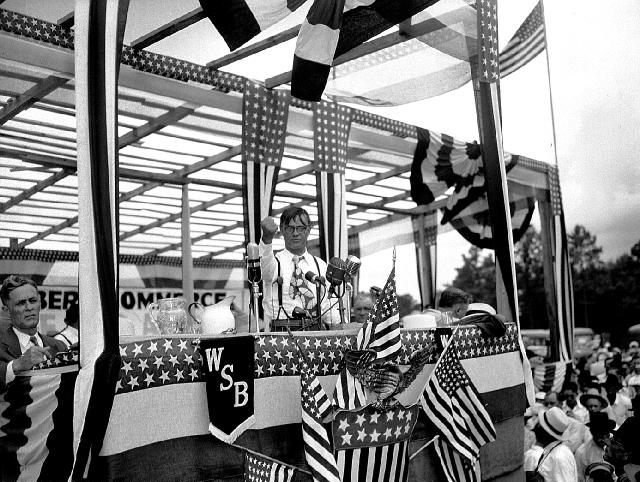
After becoming embroiled in the notorious Cocking Affair during his third term, however, Talmadge was defeated in the 1942 Democratic primary by reform candidate Ellis Arnall. Talmadge’s defeat was likely aided by his well-known enmity against the popular President Roosevelt, and by the desire of voters to maintain good relations with Washington, D.C., during wartime. Arnall recognized the need for warm relations with Roosevelt and quickly passed a resolution supporting the president’s conduct of the war. During his four years (1943-47) as governor, Arnall, who was the first governor to serve a four-year term, amassed an impressive record of reform by increasing education spending, managing the state’s economic recovery, and balancing the state’s budget for the first time in more than a century.
Despite his accomplishments, Arnall could not convince the legislature to change an amendment prohibiting gubernatorial succession and was thus barred from seeking reelection in 1946. In any case, his unwillingness to fight a 1946 judicial ruling mandating the end of the white primary would have likely hampered his reelection chances. Talmadge, however, was not similarly inclined and vowed to restore the white primary during his successful 1946 gubernatorial campaign. His subsequent death following the election, and the notorious “three governors controversy” that ensued, suggested that Georgia’s politics might remain corrupt but colorful during the postwar period, and the election of Talmadge’s son, Herman, as governor two years later confirmed the worst fears of many observers.
As the state’s governor, Herman Talmadge followed in his father’s footsteps as a defender of the “southern way of life,” which precluded any meaningful civil rights reform. In other respects, however, the younger Talmadge proved to be an able administrator, promoting economic development, increasing the state revenues, building infrastructure, and establishing a statewide public school system. Nevertheless, his dependence on patronage and machine politics did little to alter the fundamental tenets of the old political order, and his staunch defense of segregation did even less to accommodate racial progress.
However, while the pace of change was slow, Georgia’s politics eventually modernized during the postwar period. As wealth became increasingly concentrated in the state’s urban centers, middle-class reformers challenged the leadership of county-seat elites and ultimately reshaped Georgia’s political economy.
The state’s veterans were at the vanguard of this movement. Having left home, in many cases for the first time, to defend freedom abroad, soldiers often returned with a renewed commitment to political freedom and a critical perspective on local politics. Although they did not always speak with a common voice, politically active veterans did demonstrate a general inclination toward progressive policies, good government, economic development, and racial moderation. While significant civil rights reform would require federal intervention, the modernizing reforms of the postwar period and the abolition of the county unit system in 1962 represented important changes in Georgia’s politics.
Black Georgians were well represented among those veterans who turned to politics after the war. In Georgia and elsewhere, prominent African American spokesmen linked the sacrifices made by Black servicemen to the conditions that awaited them upon their return to southern states. If these soldiers fought to promote democracy and freedom abroad, the argument went, then they surely deserved the same at home.
In Georgia the 1946 abolishment of the white primary contributed to reform efforts by opening the doors to large-scale Black participation in statewide politics for the first time since Reconstruction. Voter leagues flourished throughout the state, and the National Association for the Advancement of Colored People and other civil rights organizations dramatically increased their memberships. By the time of the 1946 gubernatorial contest, more than 100,000 Black Georgians were registered to vote.
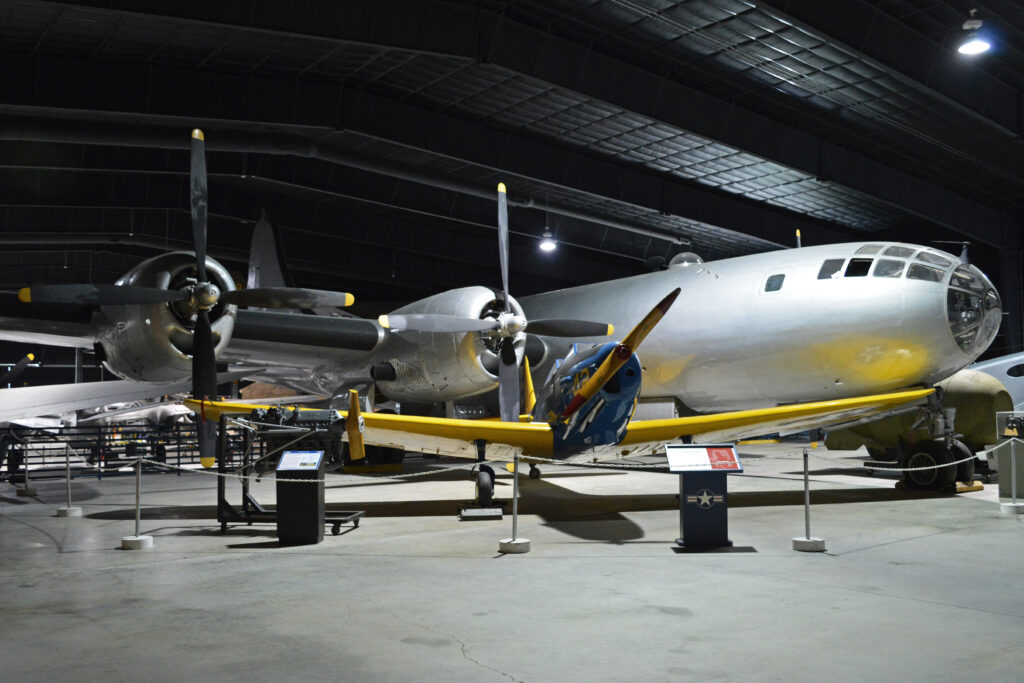
In many cases, however, Georgia’s Black voters encountered stiff resistance when heading to the polls. Because large numbers of Black Georgians relocated to urban areas to find employment during and after the war, the county unit system limited Black electoral influence by conferring undue weight to rural votes. Moreover, such groups as the neofascist Columbians and the Ku Klux Klan discouraged Black voting with the threat of violence.
Despite these obstacles, however, large numbers of Black Georgians persisted in their efforts to vote. Because the county unit system limited their influence in statewide elections, Black voters made their greatest impact in municipal contests, particularly in Atlanta, where Black leaders A. T. Walden and John Wesley Dobbs formed the Atlanta Negro Voters League in 1949. Their efforts consolidated the city’s Black votes into a powerful voting bloc capable of determining the outcomes of municipal elections.
Remembrance
In 2010 a memorial to more than 500 Chatham County residents who died in service during World War II was dedicated in Savannah. The World War II Home Front Museum, dedicated to preserving the wartime contributions of Georgia’s coastal communities, opened on St. Simons Island in 2018.


